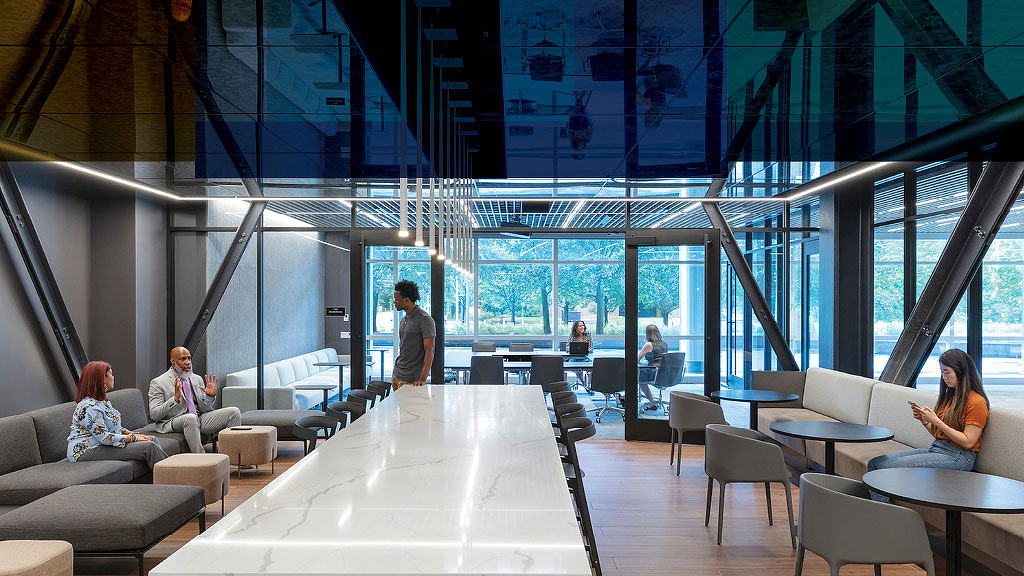How Are Companies and Employees Planning for the Future of the Office?
January 06, 2022 | By Janet Pogue McLaurin, Stephanie Benkert
As the COVID-19 pandemic continues to evolve, so do our expectations for the workplace. We conducted our U.S. Workplace Survey Winter 2021 of over 2,000 respondents — our ninth workplace survey since the beginning of the pandemic — as the delta variant was still active. We wanted to understand what companies are currently planning in terms of returning to the office, and what kind of office experience employees expect — now and in the future.
During the time of our survey, many companies that had been planning their return right after Labor Day had already delayed these plans due to the delta variant. Now, as companies have been preparing for an early 2022 return, the omicron variant is causing additional concern, once again possibly delaying a return to the office. Despite the roller coaster return to office (RTO) timing, four out of five employees report that they have worked from their company’s office space at some point during the course of this pandemic.
Companies are planning (and re-planning) for the future
Pandemic uncertainty is certainly becoming the new normal with several false starts; however, companies are continuing to plan for their return to office. Nearly 80% of our survey respondents said their company had communicated an initial return to office plan to their employees. The majority of those respondents (54%) say they will have flexible work policies — ranging from work from home because of health or family care issues, to minimum in-office days per week or month, to teams determining their own schedules. Only 9% of companies are allowing complete flexibility for employees to determine their own in-office schedule, while 37% are requiring employees to be in the office full-time.
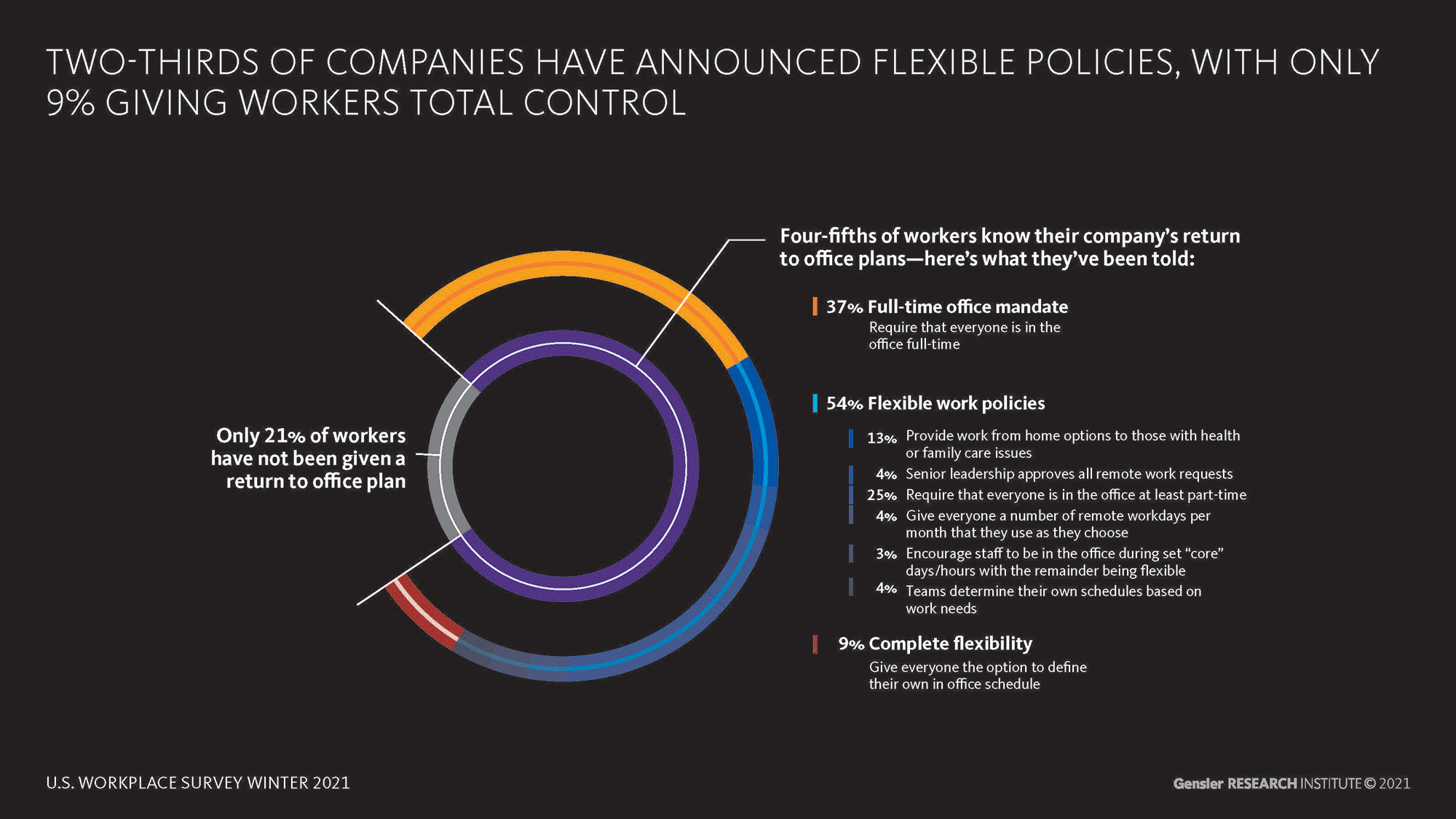
Employees are evolving their preferences and managing expectations
Employees know that their current working situations and preferences will change over time. While 45% of office workers currently desire to work remotely full-time while COVID cases are still high, that number drops to 29% as workers envision a post-pandemic future. And only one in 10 U.S. workers expect that their company will allow them to continue to work remotely full-time post-pandemic once workplaces and cities are fully reopened.
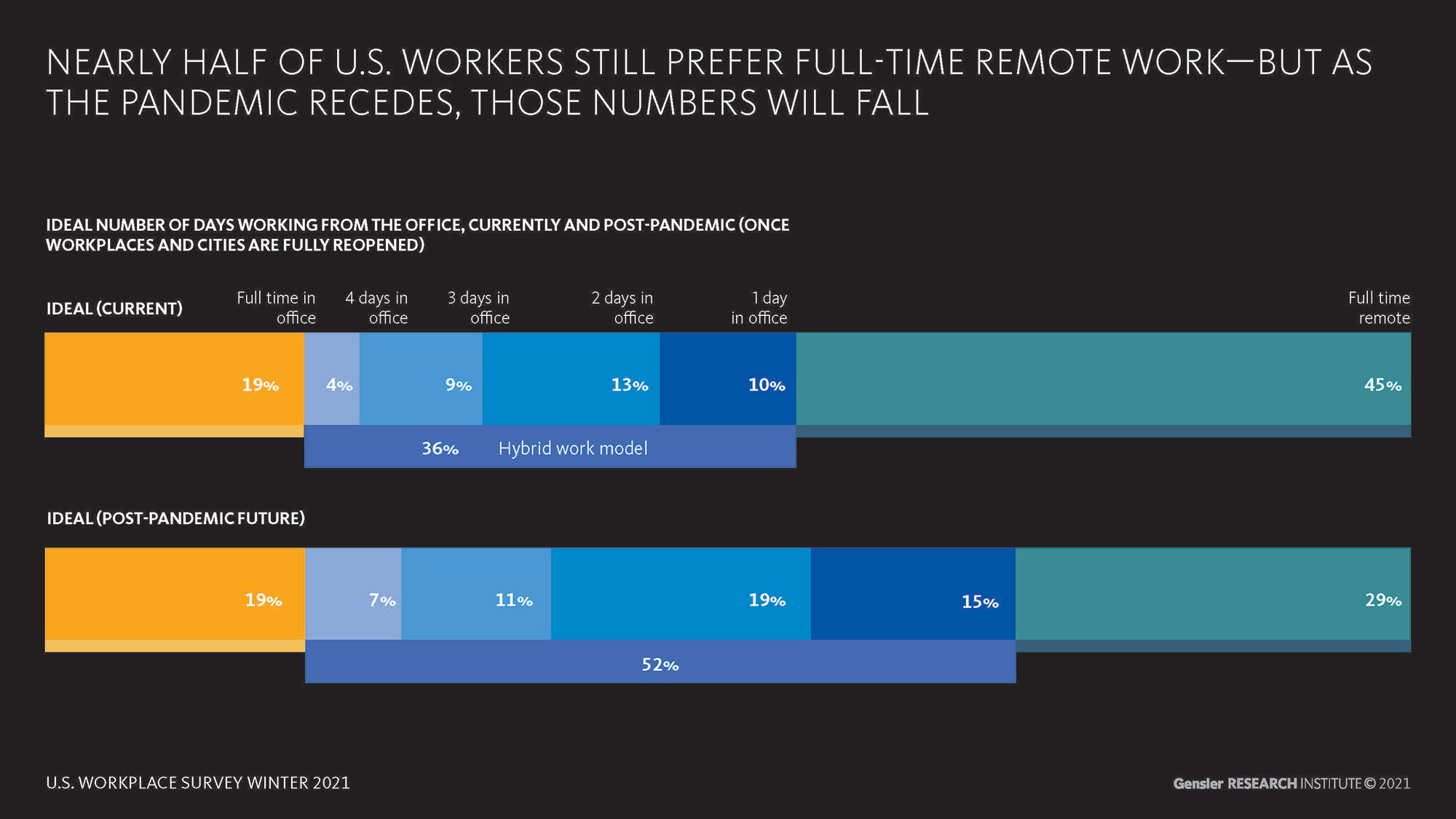
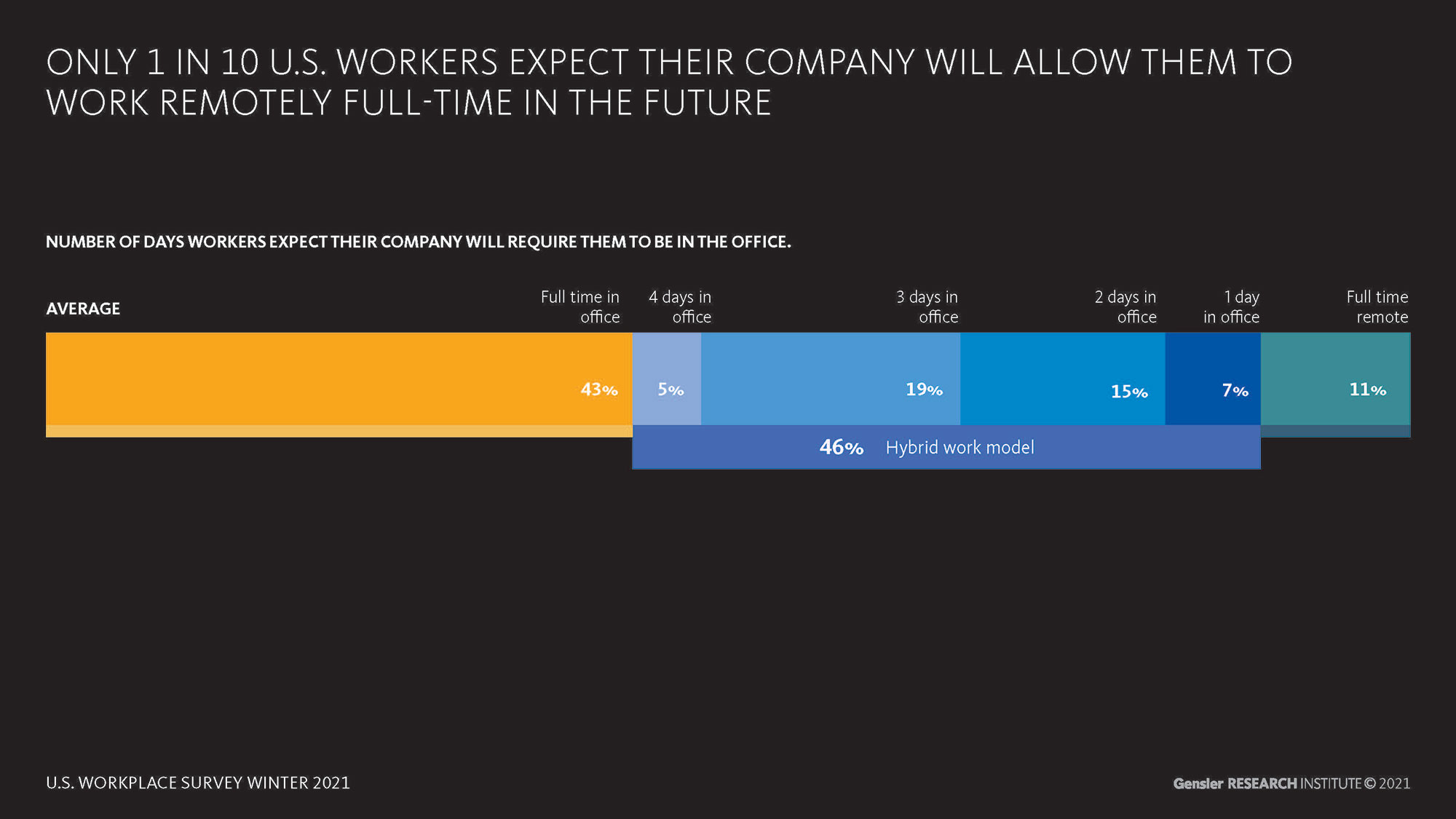
However, a new type of flexibility may be emerging. For the first time, we asked respondents how they would like to structure their time in the office — full days, partial days, primarily for specific meetings and events, or extended periods of time. Less than half (45%) would prefer full days in the office, although two-thirds (66%) expect to be required to work full days in-office post-pandemic. One-third of employees would ideally come into the office for specific meetings or events, but only half of them expect to be allowed that level of flexibility in the future. Younger generations, especially, prefer partial days in the office — a finding that is supported by our previous workplace survey findings that younger generations prefer third places to complement their in-office and remote work locations.
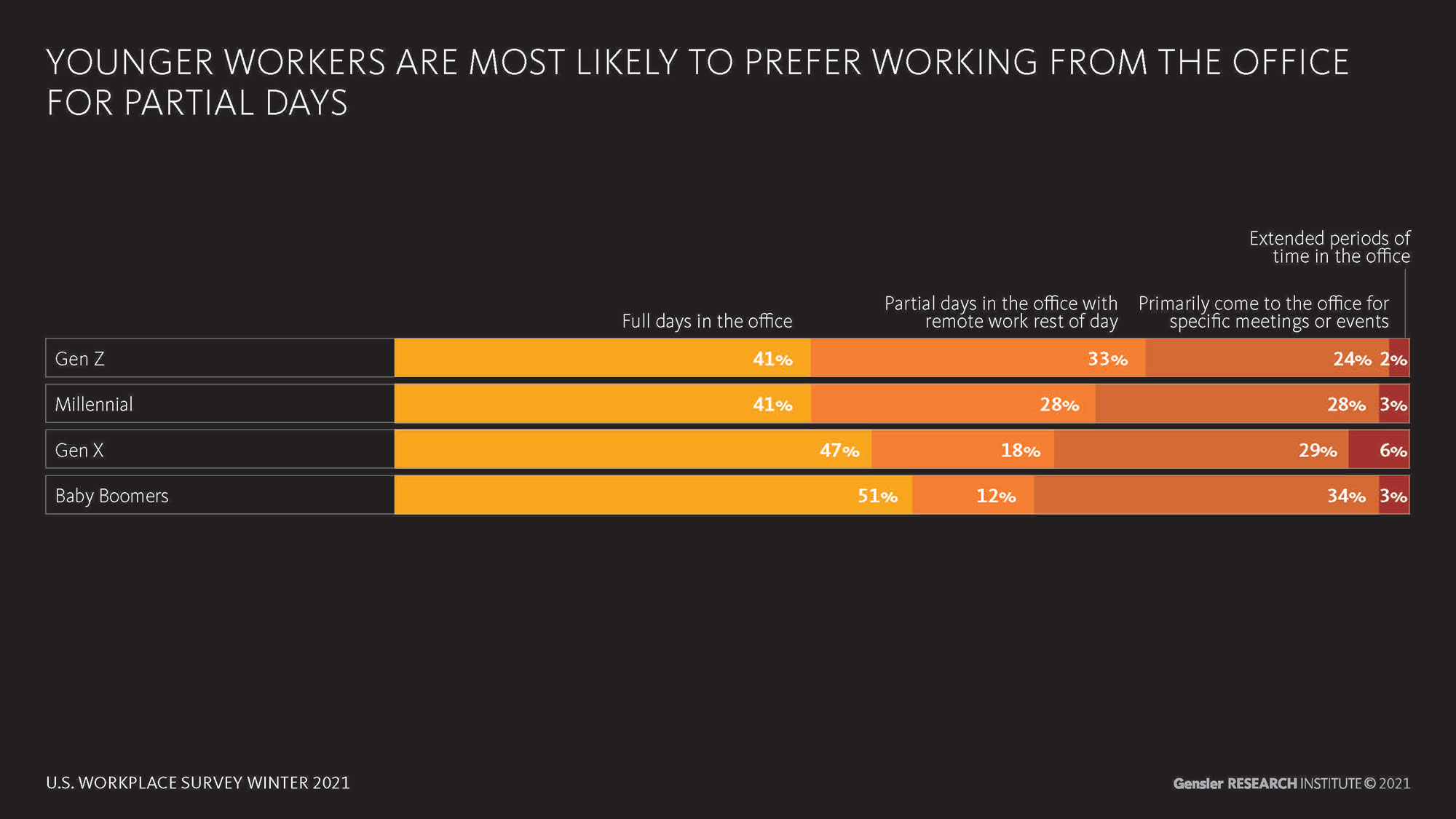
The office is still needed for collaboration and individual work
As the pandemic has evolved, so too has employees’ relationships with the office. Workers are currently relying on the office for pragmatic reasons, while other office priorities have fallen to the wayside. Employees are coming into the office to do work activities that can’t easily been done remotely — to collaborate with their colleagues and to do their individual work efficiently.
Access to specific spaces, materials, and resources continue to be a primary reason to be in the office, particularly for the consumer goods, government/defense, and science industries. Meeting with clients and maximizing individual productivity are also key in-office drivers. As the pandemic continues far longer than expected, the purpose of the office has also evolved — becoming more focused on the essentials of getting work done. Meanwhile, healthy amenities — long a top-ranked reason to come to the office — has fallen to just 7% of respondents ranking it as a top reason to return to the office. Even as priorities shift there is one constant: “collaborate with my team” has been the top reason to come to the office, across all industries and generations, since the beginning of the pandemic.
Access to private spaces is more important than ever
Over the course of Gensler’s pre-pandemic global workplace surveys, office workers were already reporting an increasing need for more access to private spaces in the office — the pandemic has simply exacerbated that need. In our latest survey, we asked respondents to select their current and ideal work environments. We were able to map their current work environment based on the “degree of openness” to each respondent’s post-pandemic ideal future environment. While we see many shifts between current and ideal, there is an overall shift toward more private workspaces (32% current to 52% ideal future).
We found variations in preferences for degrees of openness by industry, with consumer goods workers desiring more open environments and government/defense workers most in favor of more private environments. Across industries, working remotely has changed the way we work in-person and virtually. As workers return to the office, they’ll need access to more private individual spaces for both deep focus and virtual meetings.
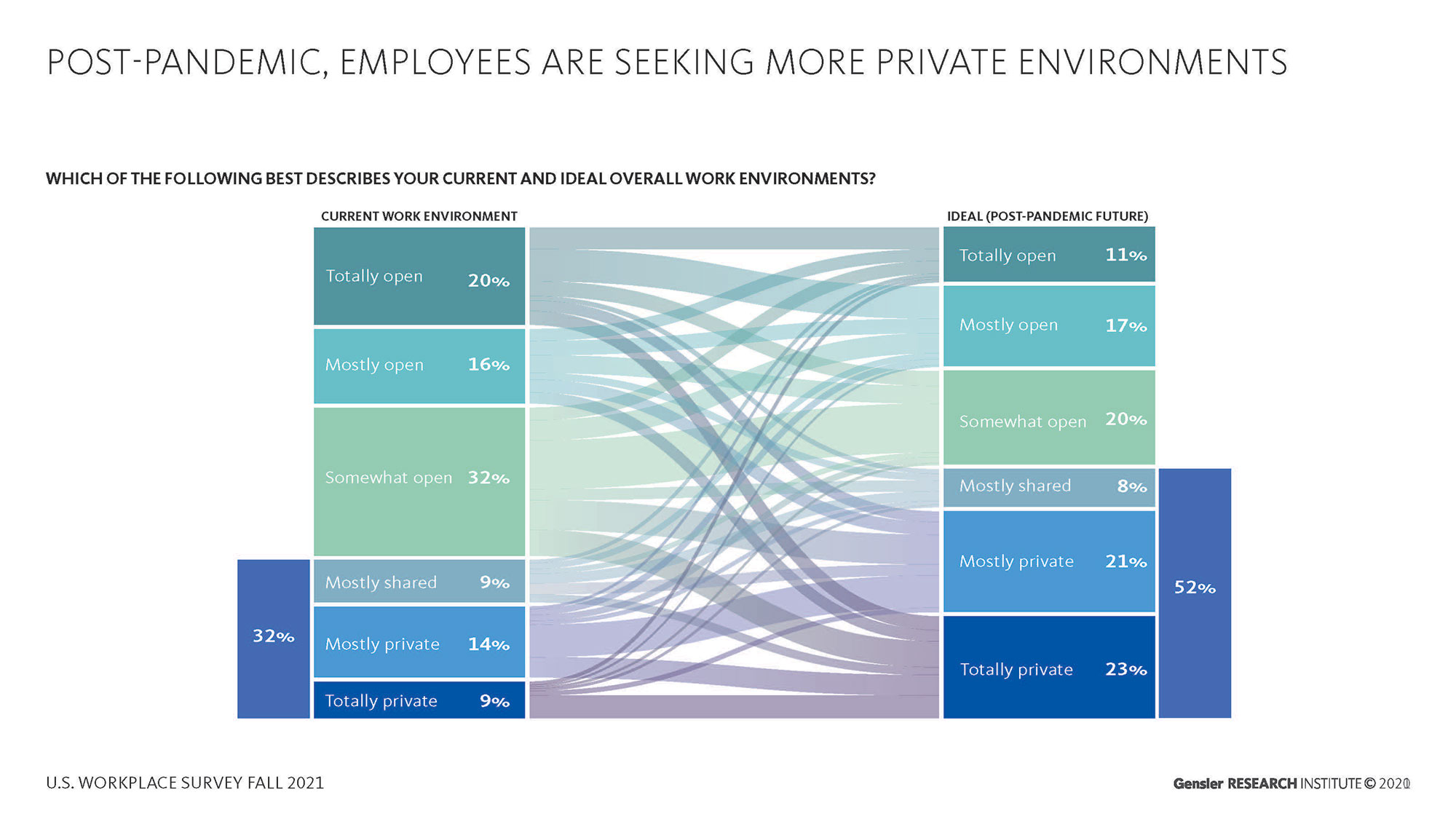
Health and safety still rule
From the very start of the pandemic, health has been top-of-mind for office workers. For those who have yet to visit their company’s office, we asked, “What would make you more comfortable going into the office now?” Unsurprisingly, the top two reasons are health and safety-related: indoor air filtration systems and enhanced cleaning protocols. Over half of these respondents also rated operable windows, outdoor workspaces, mask mandates, and testing requirements highly.
As employers plan for their return to the office, it will be beneficial to consider implementing greater safety measures to alleviate concerns for those who are hesitant to come back to the office. What was surprising is that 74% reported that access to more private spaces would make them feel comfortable returning to the office — reinforcing the importance of a re-mix of space types in future office environments.
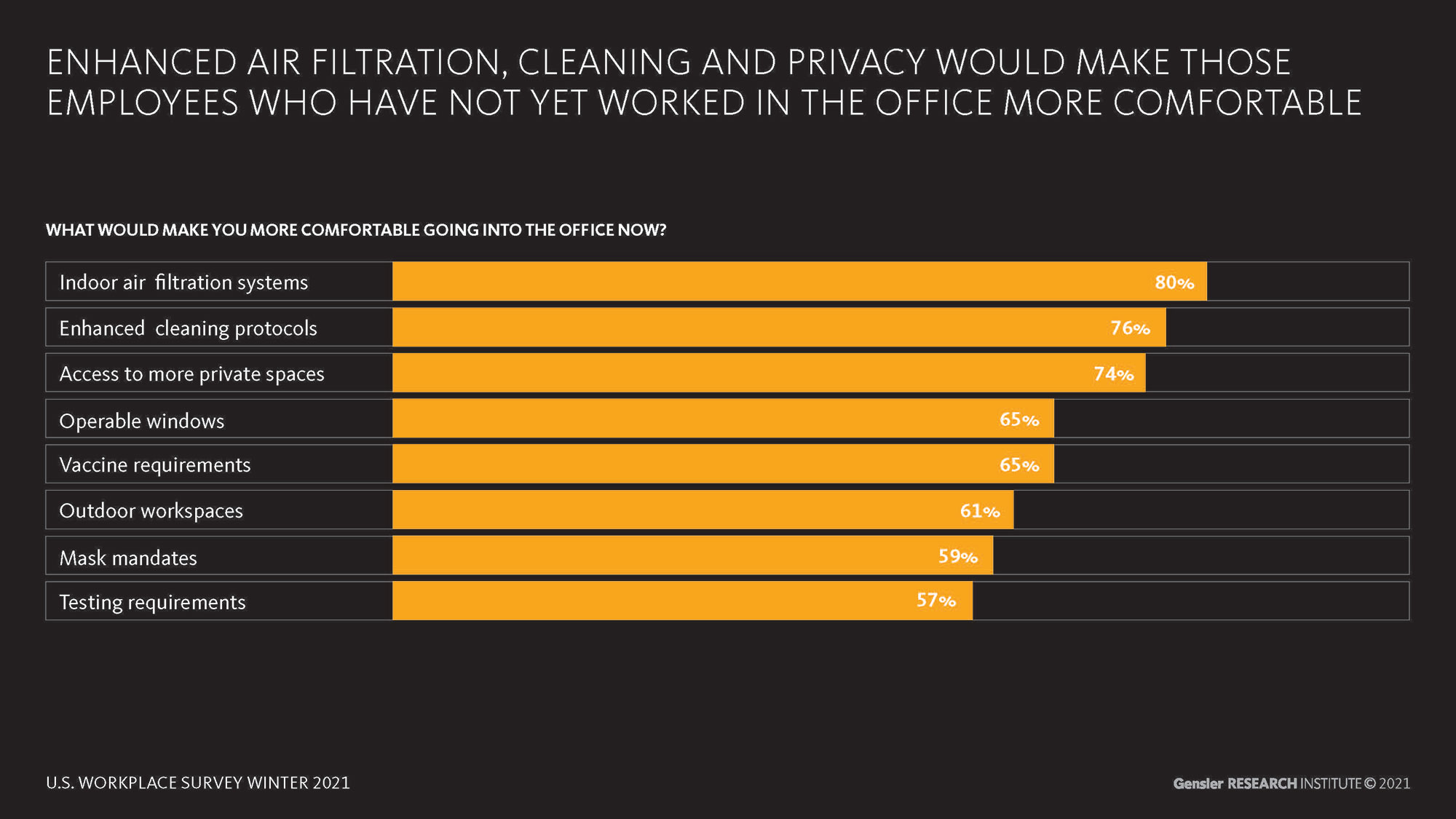
What’s next
The return to the office is just beginning. The COVID-19 pandemic continues to impact companies and workers, causing concern and uncertainty far longer than we had anticipated. What’s becoming clear, however, is the vital role of the office to support employees in their work. This has new design implications to not only create healthy environments for people and functional spaces that better support work activities occurring in the office, but as importantly, it is an opportunity to create the people experiences that we desperately crave.
We are embarking on an exciting time of experimentation in the workplace to optimize a range of hybrid, in-office, and remote workers. In this moment, we have a chance to pilot new real estate strategies and new design approaches to support new ways of working. In doing so, we can focus on what the office does best — provide the best tools, spaces, and experiences that can’t be replicated remotely. We must create workspaces where people want to be.
Individual productivity is certainly important, but that’s not the end game. Innovation can occur when we are being creative together — aligned to a common mission and purpose, building trust with each other to share those crazy ideas and push boundaries to create something new of value. To us, that means designing amazing human experiences that are worth the commute for when we do come to the office to be together once again — at whatever frequency and timing is best for individuals, teams, and organizations to not only perform at their individual and collective best, but to thrive.
For media inquiries, email .
